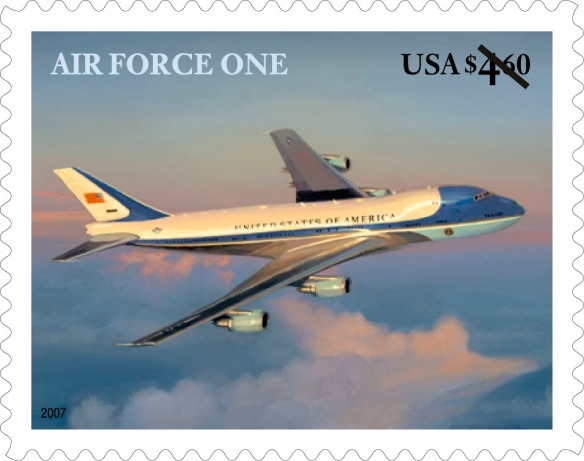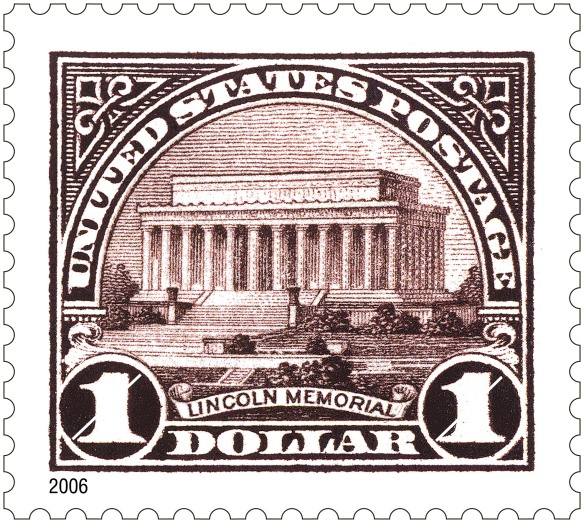Designated commander-in-chief of the nation’s armed forces, the President of the United States relies on military personnel for safe travel. Both the Air Force and Marine Corps are responsible for the President’s transportation, whether on international flights, or short trips around Washington, D.C.
 Although the name Air Force One suggests that only one aircraft transports the President throughout the nation and the world, in fact the current presidential fleet consists of two nearly identical and specially configured 747-200B series planes put into service in 1990. These planes—VC-25A aircraft with tail numbers 28000 and 29000—are maintained and operated by the Presidential Airlift Group and based just outside the nation’s capital at Andrews Air Force Base in Camp Springs, Maryland. When the President is aboard either aircraft, or any other Air Force aircraft, the radio call signal for that plane is “Air Force One.”
Although the name Air Force One suggests that only one aircraft transports the President throughout the nation and the world, in fact the current presidential fleet consists of two nearly identical and specially configured 747-200B series planes put into service in 1990. These planes—VC-25A aircraft with tail numbers 28000 and 29000—are maintained and operated by the Presidential Airlift Group and based just outside the nation’s capital at Andrews Air Force Base in Camp Springs, Maryland. When the President is aboard either aircraft, or any other Air Force aircraft, the radio call signal for that plane is “Air Force One.”
Probably the most famous jetliner in the world, Air Force One looks like any commercial jumbo jet except for its distinctive exterior. Painted shades of blue and white, the plane’s design—by noted industrial designer Raymond Loewy—includes the U.S. flag painted on the tail, the words “United States of America” emblazoned on the fuselage, and the Presidential Seal. Inside, it is clear that this is no ordinary plane. In addition to private quarters for the President and First Lady, there are two galleys where food is prepared, a conference/dining room, office space for senior staff members, and work and rest areas for the presidential staff, Air Force crews, and media representatives traveling with the President.
Although the call sign “Air Force One” has been used to designate the President’s plane since the 1950s, it was President Kennedy’s 707 that became known to the nation and the world as “Air Force One” in 1963 at the time of his assassination. In 1972, President Richard M. Nixon made historic visits to the People’s Republic of China and the Soviet Union aboard this plane, which today is on display at the U.S. Air Force Museum at Wright-Patterson AFB near Dayton, Ohio.
 Often photographed on the South Lawn at the White House, Marine One not only transports the President on short trips—for example, from the White House to Andrews Air Force Base to board Air Force One and on visits to Camp David—but regularly accompanies the President on nationwide and worldwide travel. Wherever Marine One might be, it is always met on the ground by at least one Marine in full dress uniform. As with Air Force One, “Marine One” is the radio call sign for the U.S. Marine Corps helicopter (or any other aircraft belonging to the Marine Corps) that transports the President.
Often photographed on the South Lawn at the White House, Marine One not only transports the President on short trips—for example, from the White House to Andrews Air Force Base to board Air Force One and on visits to Camp David—but regularly accompanies the President on nationwide and worldwide travel. Wherever Marine One might be, it is always met on the ground by at least one Marine in full dress uniform. As with Air Force One, “Marine One” is the radio call sign for the U.S. Marine Corps helicopter (or any other aircraft belonging to the Marine Corps) that transports the President.
Marine Helicopter Squadron One, HMX-1, was established in 1947 as an experimental unit to test and evaluate helicopters. Today this squadron and its fleet of 19 helicopters provide all helicopter transport for the President, the Vice President, and members of the Cabinet. The unit also provides helicopter emergency evacuation and other support as directed by the Commandant of the Marine Corps. More than 800 Marines supervise the operation of the fleet, which is based in Quantico, Virginia.
In 1957 President Dwight D. Eisenhower became the first president to fly in a helicopter—a single-engine, 3-passenger craft. Today’s Marine One is a twin-engine, 8-passenger craft.
Issued in 2007, these Priority Mail and Express Mail stamps honor some of the country’s most important military vehicles. Noted aviation artist William S. Phillips created the images for both stamps, capturing the President’s plane and helicopter in iconic positions.
What other sorts of important military vehicles would you like to see on future stamps?
 Over the years, the U.S. Postal service has featured many groundbreaking African-American singers, songwriters, composers, and lyricists, paying tribute to an important piece in the diverse array of American music.
Over the years, the U.S. Postal service has featured many groundbreaking African-American singers, songwriters, composers, and lyricists, paying tribute to an important piece in the diverse array of American music.



